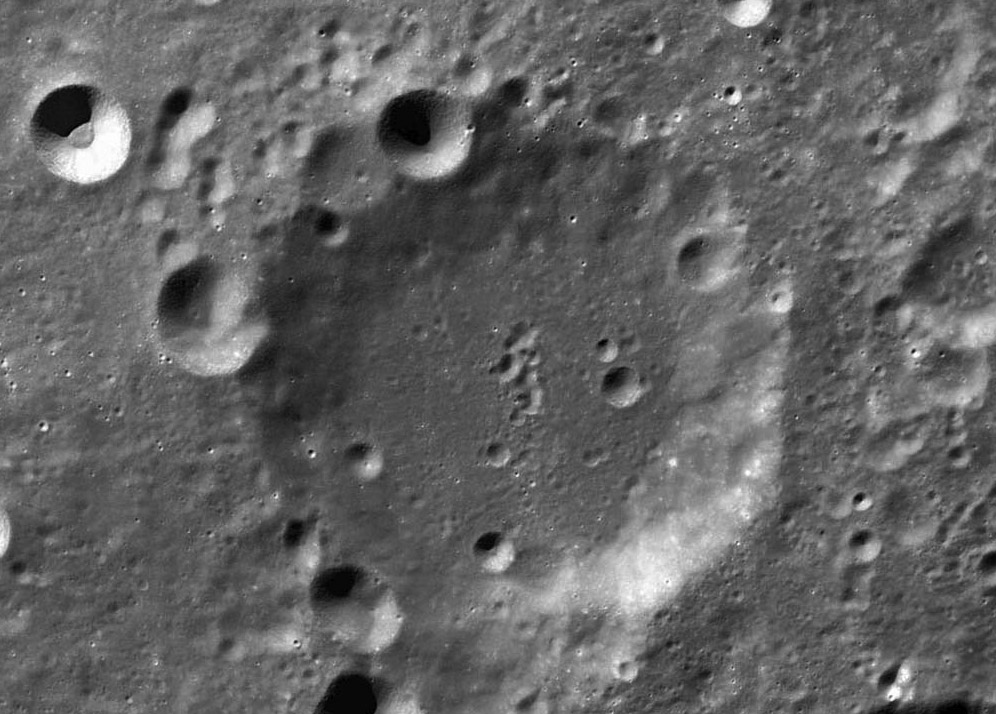
full res image from Chang’e lunar orbiter
The full resolution version of the Chang’e first image has appeared on the Planetary Society website (make sure to hit “Click to enlarge” button at bottom of image there), allowing more marveling of the capability of the orbiter. This full scale small piece from the entire image shows the 66-km wide crater Gill, displaying two levels of detail. First is the general sharpness of edges of most of the obvious craters, and the second almost requires refocusing to notice that there are hundreds of sub-kilometer scale impact pits. Some areas have many (cluster near the upper right) and other areas (lower left) have almost none. This uneven distribution suggests that some may be secondary craters (from Hale at 74°S??), as does the visual impression that there are few fresh craters with diameters intermediate between the sub-kilometer ones and those 3-5 km and larger; detailed crater counts are necessary to see if there is a gap. Another fascinating detail, subtle but real, is the sharp boundary between darker material and less-dark cutting across the east edge of Gill. Look closely and you can trace the boundary all across the crater and its rim, but not beyond it. This may be partially an optical effect - i.e. not real - but I doubt that is the entire explanation for I see similar, but smaller, edges in places across the bottom right of the entire image. If this dark material is real I have no idea what would cause a thin layer that doesn’t extend beyond the crater. The question of secondary versus primary craters and the possible existence of a new kind of deposit are examples of the types of investigations that can be undertaken with this new generation of high resolution images.
Related Links:
Rükl Limb Chart V
Yesterday's LPOD: Hooray, Chang’E!
Tomorrow's LPOD: Not from Orbit
COMMENTS?
Register, Log in, and join in the comments.



